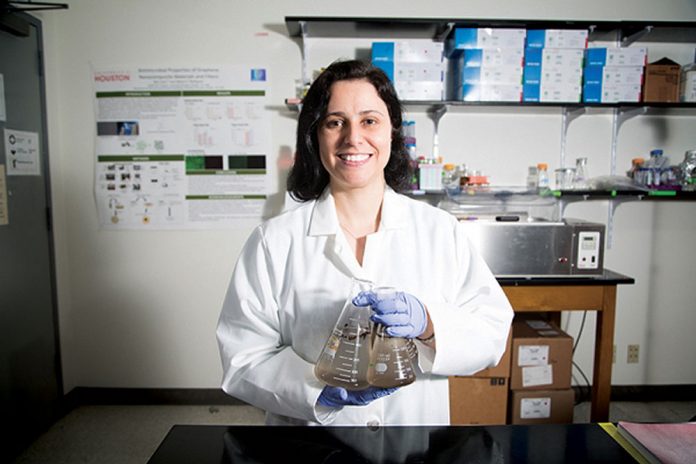
Debora Rodrigues, Associate Professor of Civil and Environmental Engineering at the University of Houston, Texas, has received the 2016 C3E Research Award, for her work focusing on developing bio- and nanotechnologies to reduce energy costs in water and wastewater treatment.
The Clean Energy Education and Empowerment (C3E) initiative was launched in 2010 by the US Department of Energy as a way to highlight women working in the field.
“This award made me realise that my research and accomplishments in the water-energy nexus is making a difference not only to the scientific community, but also to society as a whole,” Debora Rodrigues told The Source. “This award is extremely special to me since it gives voice to women in STEM careers, like me, and helps motivate young female generations to pursue careers in this important field of clean energy.”
Rodrigues said she was first drawn to the nexus of water and energy because of health problems associated with microbial water contamination in her native country of Brazil. But making a difference, especially in the developing world, requires solutions to be simple and inexpensive.
Most available water treatment technologies require several steps, which raise the cost. Reverse osmosis, for example, effectively removes contaminants but requires huge amounts of energy.
“Today there is not one single technology that will treat all types of water and wastewater efficiently and in a cost effective manner,” said Rodrigues. “About 40 percent of total energy consumed in municipalities is for water treatment. I believe that by combining both bio and
nanotechnologies, it will be possible to reduce the energy costs involved in water and wastewater treatment.”
Rodrigues has two technologies under development, both designed to be reusable and which require little or no energy. The first is a nanocomposite coating, capable of removing heavy metals, radioactive materials and micro-organisms. The second uses hydrogel polymer beads, aimed at removing nitrogen and phosphorous from agricultural runoff.
“The technologies that I have developed have yielded two US patents and one international patent,” added Rodrigues. “It is always very rewarding for a scientist to see his/her work moving out of the boundaries of the lab and being used in practical applications to benefit society.”







